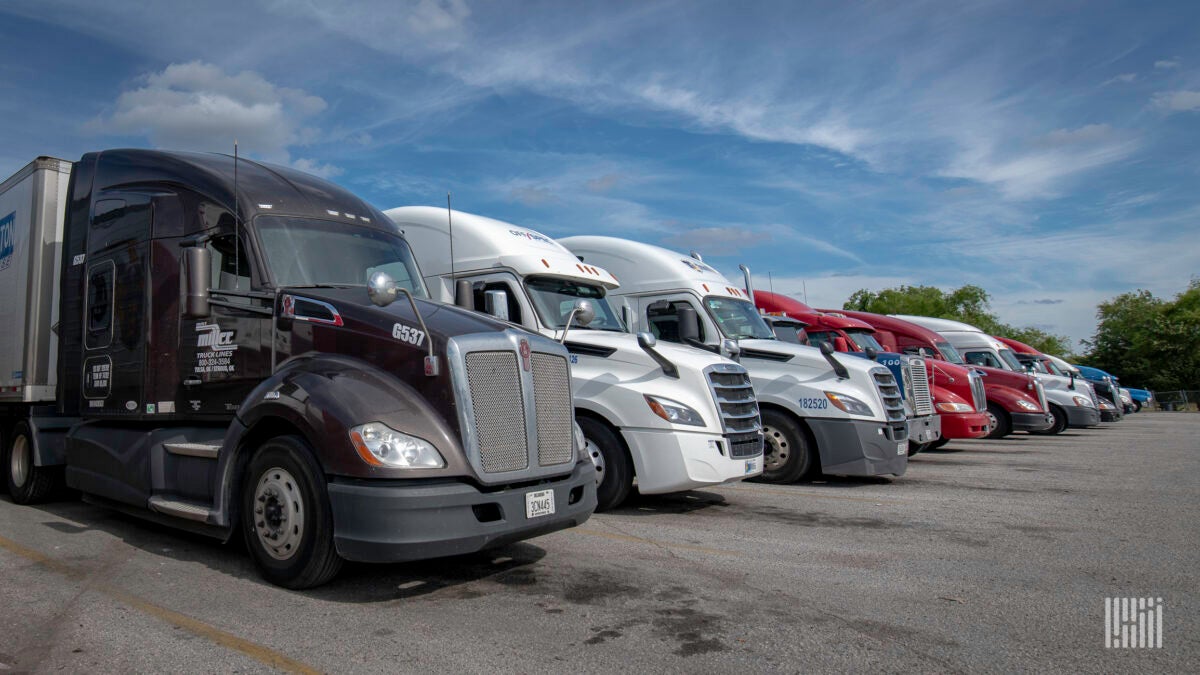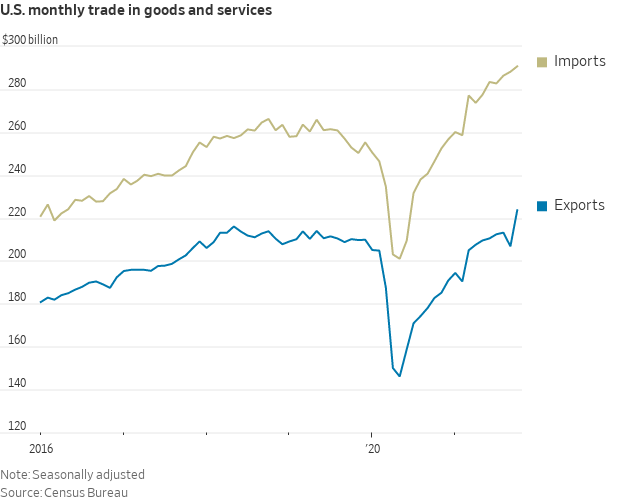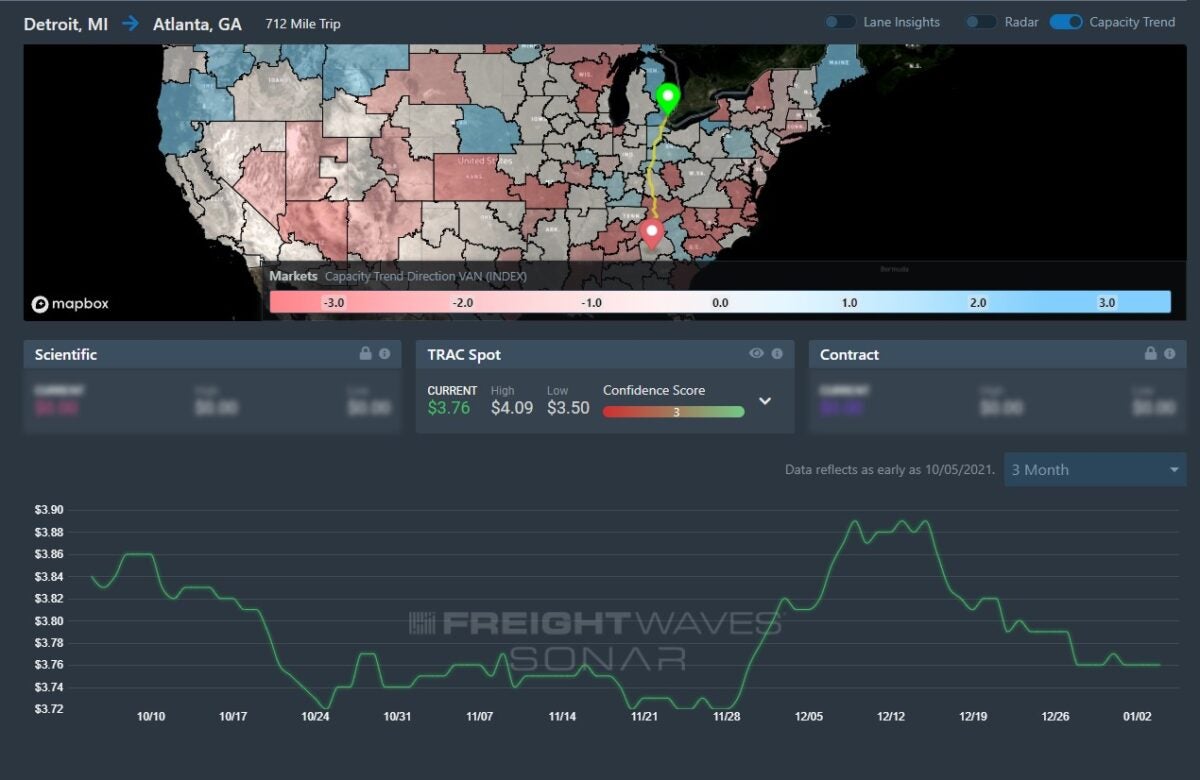Driver recruiting challenges, pay and demographics trends

Driver recruiting remains a key challenge heading into 2022 due to pandemic, demographic and economic trends. Pay and wages remain a central theme in both driver recruitment and retention, with carriers raising base driver pay multiple times in 2021 to keep up with demand. These pay raises are passed off onto shippers and consumers through higher freight rates and transportation costs, fueling inflationary pressures across the broader economy. Below are a few key themes to watch as 2022 gets underway.
Driver demographic trends:
- Research from HireRight said 57% of drivers today are over 45 years old and that 10% of the driver base is past the age of retirement, predicting 25% of the driver workforce will retire within the next 10 years.
- The pipeline for new drivers entering the workforce slowed due to pandemic disruption, and surveyed driving schools saw a 40% reduction in new driver certifications in 2020.
- When asked about where the potential drivers went, Justin Reed, manager of DOT strategic services for HireRight asked, “Where are these people finding employment?” He added, “Were they going to be a driver or if they would have gone to a driver’s certification school and chose not to, where have they gone? What is our chief competition for talent at this point?”
- American Trucking Associations data corroborates this trend with the median age of over-the-road drivers at 46 and private fleet drivers at 57 — both above the nationwide average age of workers in the U.S. at 42 years of age. Compounding this issue is the average age of a new driver entering trucking is 35.
Driver pay competition heats up:
- Sign-on bonuses represent a double-edged sword as drivers can accrue some of a bonus at one company, then quickly quit and take another sign-on bonus at another carrier, alternating employment to maximize recruiting incentives as extra income.
- Regarding this job-hopping trend, Brian Runnels, vice president of safety at Reliance Partners, said, “Not too long ago you’d see somebody that had a multitude of jobs in a short period of time and it wasn’t somebody you wanted to hire. Now I think it really doesn’t matter.”
- HireRight survey data shows 56% of carriers were increasing pay to boost retention due in part to exit interview answers from drivers, 58% of whom leave their organizations seeking more money.
Influencers to the rescue?
- The same HireRight survey found influencers have on average 561% more engagement on content than the companies’ own marketing campaigns.
New release: Global Supply Chain Pressure Index
The pandemic-related stress on the supply chain caused researchers at the New York Federal Reserve to create an index to measure logistics chaos to further identify causes for the recent consumer price inflation. This measure aggregates 27 indicators — including two shipping indexes, the Baltic Dry Index and the Harpex index — into a standard deviation from the average since 1997.
Standard deviation is like a bell curve. Under good circumstances, most data will fall between -1 to 1, which will represent 68.26% of all points. If you go up to 2 or -2 standard deviations, you’re now in the 95.44% of all possible points. The COVID era has kicked the standard deviation on this index up to around 4.43 and 4.47 above average, which is less than 1%, or an extremely rare “four sigma” event. Statistics says a four-sigma event is expected once every 31,260 days, or once in 126 years. Needless to say, COVID means we live in unprecedented times.
Impact on trucking:
Global supply chain pressures translate downstream into freight-related stressors as most goods coming into the ports will be transloaded into intermodal, LTL or full truckload shipments. The greater the index score, the greater transportation and supply chain disruption, which can affect carriers by lack of repair parts, the semiconductor shortage, lack of raw materials in Class 8 and trailer construction, and longer dwell times due to distribution centers being overwhelmed with excess shipments. Carriers both impact and are impacted by volatility in the supply chain and understanding the current environment can help decision-makers navigate these challenges.
Market update: Consumer demand for goods drove holiday import surge

Consumer demand for goods caused increased demand for imports and widened the trade deficit to a record $99 billion in November. This demand will continue to influence port activity and lead to elevated freight volumes moving into the first half of 2022. Inflationary pressures remain a concern, with disruptions from labor shortages and transportation costs adding challenges amid the backdrop of COVID-related supply chain disruptions.
General Mills Chief Executive Officer Jeff Harmening said during a Dec. 21 earnings call, “Input-cost inflation is at a 10-year high and labor shortages and other issues are causing disruptions across our supply chain, from our suppliers to manufacturing to distribution.” He added, “These disruptions are driving down service levels and driving up costs above and beyond inflation throughout the industry.”
FreightWaves TRAC lane spotlight: Detroit to Atlanta

Summary: Spot rates decrease as capacity loosens because of a decrease in tender rejections.
Highlights:
- Outbound tender rejections decreased in the Detroit market 45.5% — from a high of 42.5% in late December to 19.33% this week.
- The Atlanta market tender rejections remain at 18%, in line with seasonal trends compared to 24-30% rejections during spring produce surges.
- FreightWaves TRAC spot rates for the Detroit to Atlanta lane decreased 13% from late December highs of $3.89 per mile, leveling out at $3.76 per mile to date during the first week of January.
What does this mean for you?
Carriers: Tender compliance will be a priority in the coming weeks as drivers return to work and customers attempt to tender shipments that they couldn’t find capacity for during the holidays. The sky-high rejection rates from late December put carriers in a situation of customer relationship management due to dwindling capacity. Managing customer expectations over the next few days will be crucial.
The Routing Guide: Links from around the web
Flatbed carrier Lawrence Freight ups driver pay as much as 40% (FreightWaves)
Small carriers taking big hits from I-95 shutdown (FreightWaves)
Nikola drops $2B patent infringement suit against Tesla (FreightWaves)
Employment report: More trucking jobs in December than 2 years ago (FreightWaves)








